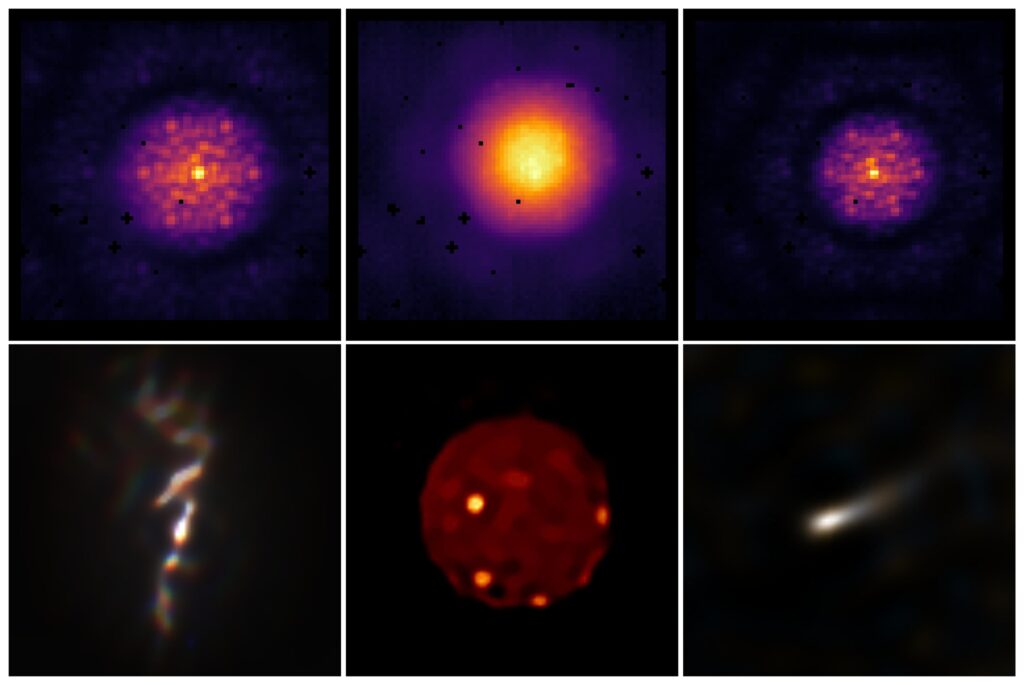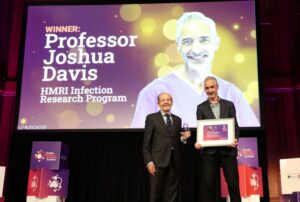
A pair of Sydney Ph.D. students have significantly enhanced the capabilities of humanity’s most powerful space observatory, the James Webb Space Telescope (JWST), without ever leaving Earth. Louis Desdoigts, now a postdoctoral researcher at Leiden University in the Netherlands, and his colleague Max Charles, celebrated their achievement with tattoos of the instrument they helped repair inked on their arms.
This groundbreaking advancement stems from a software solution developed by researchers at the University of Sydney. The fix addressed blurring in images captured by NASA’s multibillion-dollar JWST, restoring the sharpness of one of its essential scientific instruments—all without the need for a costly space mission or astronaut intervention.
Innovative Software Solution
The breakthrough builds on the only piece of Australian-designed hardware on the JWST—the Aperture Masking Interferometer (AMI). This instrument, created by Professor Peter Tuthill from the University of Sydney’s School of Physics and Sydney Institute for Astronomy, allows astronomers to take ultra-high-resolution images of stars and exoplanets using a technique known as interferometry.
After the JWST began operations, scientists discovered that AMI’s performance was compromised by subtle electronic distortions in its infrared camera detector. These distortions injected fuzziness into the images, reminiscent of the Hubble Space Telescope’s initial “blurry vision,” which required a space shuttle mission and astronaut spacewalks to correct.
Instead of designing new hardware or launching a rescue mission, Ph.D. students Louis Desdoigts and Max Charles, under the guidance of Professor Tuthill and in collaboration with Associate Professor Ben Pope from Macquarie University, developed a software-only calibration system. This system, called AMIGO (Aperture Masking Interferometry Generative Observations), uses advanced simulations and neural networks to model the telescope’s optics and electronics in space.
Technical Achievements and Impact
By understanding the “brighter-fatter effect,” where electrical charge bleeds into neighboring pixels, the team developed algorithms that effectively “de-blurred” the images, restoring AMI’s full sensitivity. “Instead of sending astronauts to bolt on new parts, they managed to fix things with code,” Professor Tuthill remarked. “It’s a brilliant example of how Australian innovation can make a global impact in space science.”
The results have been spectacular. With AMIGO, the JWST has achieved sharper-than-ever detections of faint celestial objects, including the direct imaging of a dim exoplanet and a red-brown dwarf orbiting the nearby star HD 206893, located about 133 light years from Earth.
Expanding the Telescope’s Capabilities
A companion study led by Max Charles has demonstrated AMI’s renewed focus by capturing high-resolution images of a black hole jet, the volcanic surface of Jupiter’s moon Io, and the dusty stellar winds of WR 137. These achievements push the boundaries of the JWST’s capabilities, bringing its vision into even sharper focus.
“This work brings JWST’s vision into even sharper focus,” Dr. Desdoigts commented. “It’s incredibly rewarding to see a software solution extend the telescope’s scientific reach—and to know it was possible without ever leaving the lab.”
Future Prospects and Publications
Dr. Desdoigts has since secured a postdoctoral research position at Leiden University in the Netherlands. Both studies have been published on the pre-print server arXiv, with Dr. Desdoigts’s paper peer-reviewed and set to appear in the Publications of the Astronomical Society of Australia. This release coincides with the latest round of James Webb Space Telescope General Observer, Survey, and Archival Research programs.
The success of this software solution not only enhances the JWST’s capabilities but also sets a precedent for future innovations in space exploration, demonstrating the power of ground-based solutions in addressing complex astronomical challenges.




